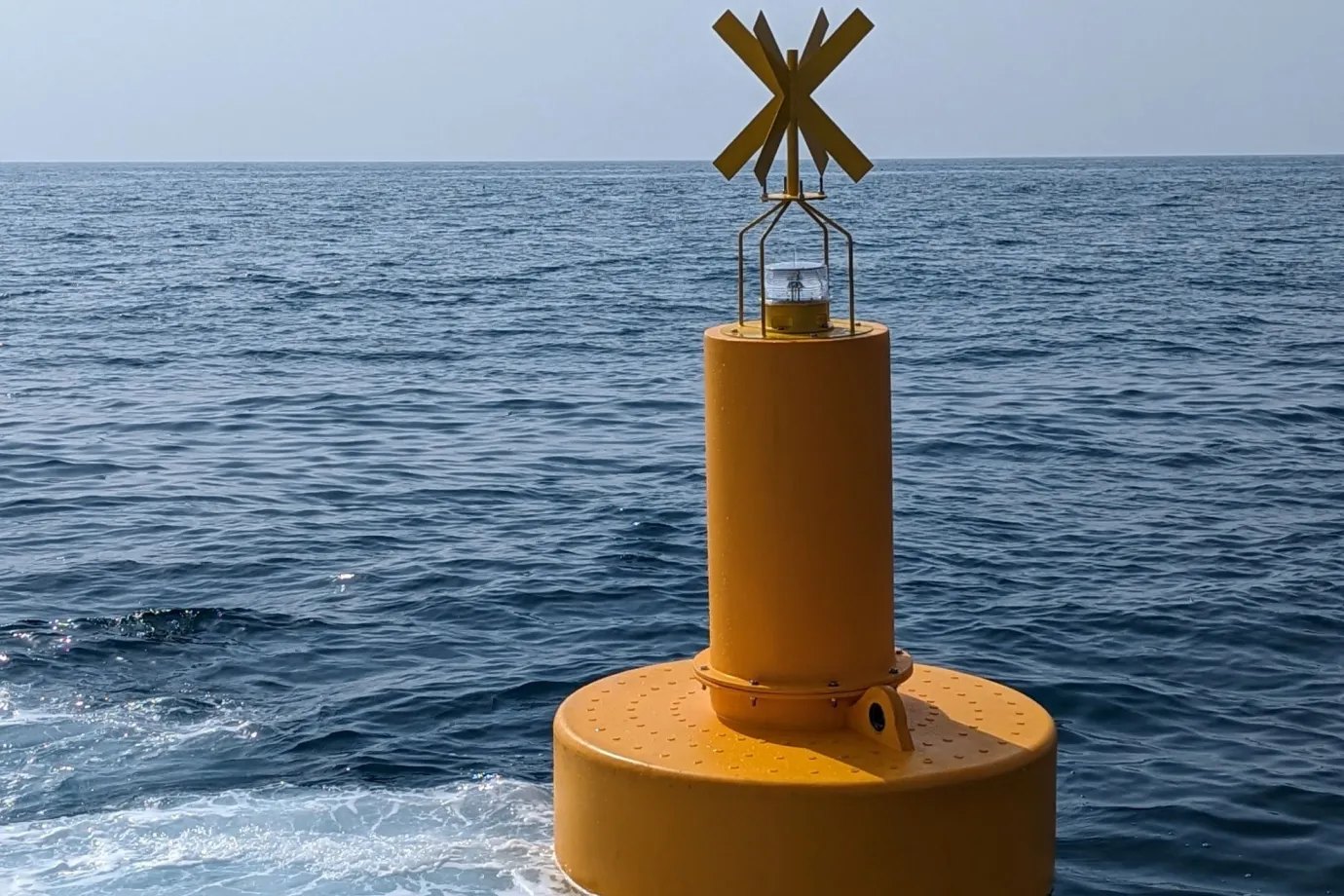Heavy-duty HDPE boom are floating devices used in maritime operations to meet environmental, safety, or security needs. One of the most common challenges associated with using booms is losing efficiency in exposure to extreme weather conditions, such as ice, high currents, and strong winds. Since they are designed to be used in critical cases where environmental protection, people’s safety, or security goals matter, the booms must be durable and high-performance even in harsh conditions. This is why the material used in manufacturing the booms becomes a competitive factor that determines their efficiency.
Among these materials, High-Density Polyethylene (HDPE) is the one that is well-known for the lightweight and significant resistance it offers, especially in the case of boom designing, where both buoyancy and durability are vital. In this blog post, we will understand what HDPE is and why using a heavy-duty HDPE boom for harsh conditions is suggested.
For enhanced protection in busy waterways, explore our “HDPE watercraft safety boom“.

What Is a Heavy-Duty HDPE Boom?

Since most of the booms are installed permanently in marine environments, they are widely exposed to harsh conditions, including constant sunlight, sub-zero or freezing conditions, high currents, strong storms, floating ice, and chemical impacts. Therefore, the boom’s floats abrade over time and lose their efficiency, which can directly affect the boom’s operation in general. Marine manufacturing companies accordingly started to design their booms’ construction with strong, resistant materials instead of steel, wood, Polyvinyl Chloride (PVC), Linear Low-Density Polyethylene (LLDPE), and Medium-Density Polyethylene (MDPE), the traditional and common materials that offer more vulnerability.
High-Density Polyethylene (HDPE) is a petroleum-based type of thermoplastic polymer. Because of the lightweight but highly resistant characteristics it offers, HDPE has become a popular material in the industrial field, especially in marine operations. Using HDPE to design the floats of booms offers prolonged operation and minimized maintenance requirements. By staying durable against abrasions and impacts, the heavy-duty HDPE boom can meet the marine project’s needs as well and perform efficiently long term.
Looking to keep waterways clean and safe? Discover our “HDPE debris boom“, designed to block floating waste while withstanding harsh environmental conditions.

Manufacturing Methods of a High-Density Polyethylene Boom

Extrusion and rotational molding (rotomolding) are primary methods for manufacturing a rugged HDPE floating barrier. In the extrusion, HDPE resin (pellet or powder) is melted and forced through a die to form a specific continuous hollow pipe or tube profile. After cooling down, they are cut to finalize the design in the required length.
For more durability, manufacturers follow the co-extrusion method, where two or more HDPE materials are simultaneously extruded through a single die to form a multi-layered product, providing enhanced strength and resistance over standard extrusion. While in rotational molding, a batch of pellets or powdered HDPE is heated to mold and rotated on two perpendicular axes, causing the softened plastic to coat the interior, forming a hollow, seamless part as it cools.
Not sure which floating barrier material is right for your project? Read our full guide: “HDPE Boom vs Steel vs PVC“.
Core Features of Rugged HDPE Floating Barriers

We discussed what HDPE is and why harsh conditions demand heavy-duty HDPE booms. But the question is: what features must a heavy-duty HDPE boom include to address the challenges of harsh conditions and be efficient in operation? Here are the core features of a rugged HDPE floating barrier:
Durability and Resistance
The float constructions of a heavy-duty HDPE boom typically include an HDPE-based thick wall, which is filled with foam. Whether the boom is manufactured through extrusion, co-extrusion, or the rotomolding method, the tick-wall HDPE must be strong enough to be durable, corrosion-proof, and UV-resistant to offer permanent operation with minimal maintenance, even in harsh conditions. Moreover, the foam used to fill the inside of an HDPE pipe or tube is typically closed-cell polyethylene, which adds extra strength to the boom’s float construction.
Lightweight and Buoyancy
Whether it is an environmental boom designed to protect the marine ecosystem or a safety boom designed to ensure people’s safety, buoyancy is another core feature of a heavy-duty HDPE boom. The lightweight of HDPE and the closed-cell polyethylene foam inside guarantee that the boom remains buoyant, even if the outer HDPE layer is compromised. It is critical for a heavy-duty HDPE boom not to lose its buoyancy in harsh conditions and stay efficient and high-performance.
Anchoring and Connecter System

Manufacturing companies utilize various systems to connect the HDPE floats in their booms. These systems are widely specified and customized based on the site conditions and the project’s needs. However, the HDPE floats are typically linked to each other through stainless steel chains, tubes, or wires, engineered to be strong enough to prevent any failure or breakage. The anchoring systems, on the other hand, should be designed with a high break load capacity, ensuring the reliable performance and operational efficiency of rugged HDPE floating barriers under harsh conditions. An optimized anchoring system and connectors ensure the HDPE boom high flow functionality, which refers to reliable and effective operation in fast waters, strong currents, or turbulent conditions.
Modular and Customizable Design
Heavy-duty HDPE booms feature minimal failures, but they might be damaged and require maintenance or replacement. By providing the booms with a modular design, the damaged float can be replaced or maintained without requiring the replacement of the entire HDPE boom, which not only incurs higher maintenance costs but also includes a more complex process. In addition, most of the rugged HDPE floating barriers are custom-designed to address the project’s objectives. They can be manufactured in the client’s required length, size, color, and even anchoring systems.
Challenges and Benefits of Heavy-Duty HDPE Booms

Prolonged exposure to sunlight can cause embrittlement, discoloration, and reduced mechanical strength. Considering UV-stabilizers in the manufacturing process of HDPE booms minimizes the destructive effect of consistent sunlight and UV rays. Moreover, since rugged HDPE floating barriers are designed to be often used in harsh conditions, they should be engineered with high-quality connectors, which ensure efficiency in strong currents and fast waters.
Heavy-duty HDPE booms are also provided at a higher upfront price than PVC, LLDPE, or other alternatives. Despite these challenges, HDPE booms offer a superior lifespan, guaranteeing up to 50 years of design life. Their high durability and minimum maintenance requirements also make heavy-duty HDPE booms a valuable choice that can be an investment (a considerable cost at first, and nothing else!).
An Efficient Solution for Harsh Conditions: ADOR’s Heavy-Duty HDPE Boom

At ADOR, we design and manufacture heavy-duty HDPE booms as a solution to ensure environmental protection and safety goals in marine projects. By using the rotational molding (Rotomolding) method, our booms are engineered to be corrosion-proof, UV-stabilized, and 50-year design life. We try to bring the HDPE revolution into the Canadian market, where no domestic manufacturing exists. Understanding the challenges and weaknesses helps us to provide heavy-duty HDPE booms that meet the marine project’s requirements as well.
Conclusion
In summary, heavy-duty HDPE booms are designed to operate in harsh conditions like extreme temperatures, strong currents, and winds. Due to their crucial role as a solution to marine environmental or safety projects, these floating barriers should be optimized with some core features, including durability and resistance, reliable anchoring systems and connectors, buoyancy, modular design, and customizability. Understanding the manufacturing methods of heavy-duty HDPE booms and the challenges and advantages they offer can provide insight into this product.
HDPE booms act as floating barriers that block debris, oil, or hazards from spreading in waterways, helping safeguard ecosystems and infrastructure.
By combining thick-wall HDPE with closed-cell foam and UV stabilizers, these booms resist corrosion, sunlight, and impact, ensuring long-term performance.
Yes. Heavy-duty HDPE booms are engineered to stay buoyant and secure even in extreme conditions like freezing waters, fast currents, and high winds.
With proper UV stabilization and robust anchoring systems, an HDPE boom can remain effective for decades, often reaching up to 50 years of service life.
Although initial investment is higher than PVC or LLDPE alternatives, HDPE’s long lifespan and minimal maintenance make it the more economical choice long-term.




